After 40 years of running Antonello Ristorante, Antonio Cagnolo still delivers food ‘from sea to table’
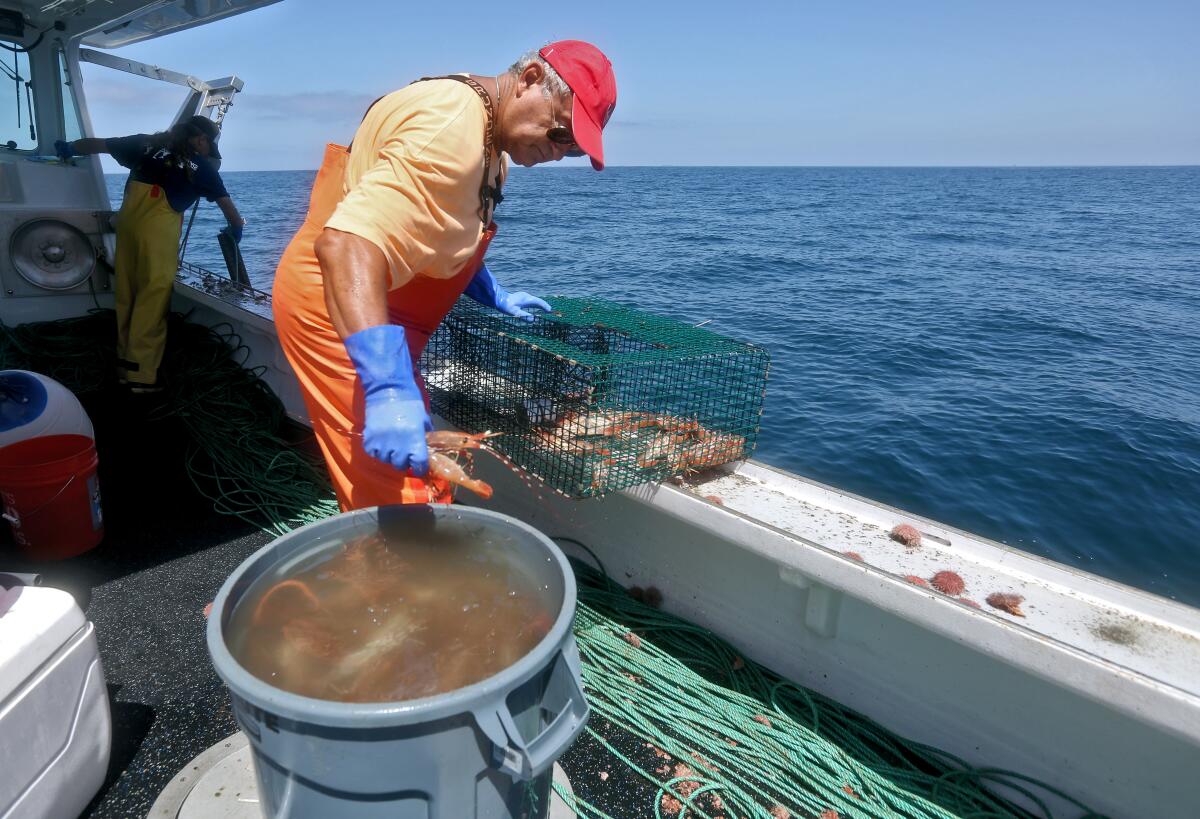
- Share via
On a crisp August morning, Antonio Cagnolo stepped onto a 48-foot Mussel Ridge fishing boat based in Huntington Harbour. The longtime Orange County restaurateur was getting back to his roots.
In his native Italy, Cagnolo’s father was a butcher, farmer and fisherman. The two used to catch bounty from the Mediterranean.
Now, many decades later and floating atop another sea, Cagnolo is again looking for fresh catch.
Cagnolo opened his flagship restaurant, Antonello Ristorante, in Santa Ana across from Costa Mesa’s South Coast Plaza in 1979. Its sister establishment, Quattro Caffe, opened in 1991 in South Coast Plaza.
In “sea to table” fashion, he’s known to catch some of his restaurants’ fresh seafood, cook it and serve it.
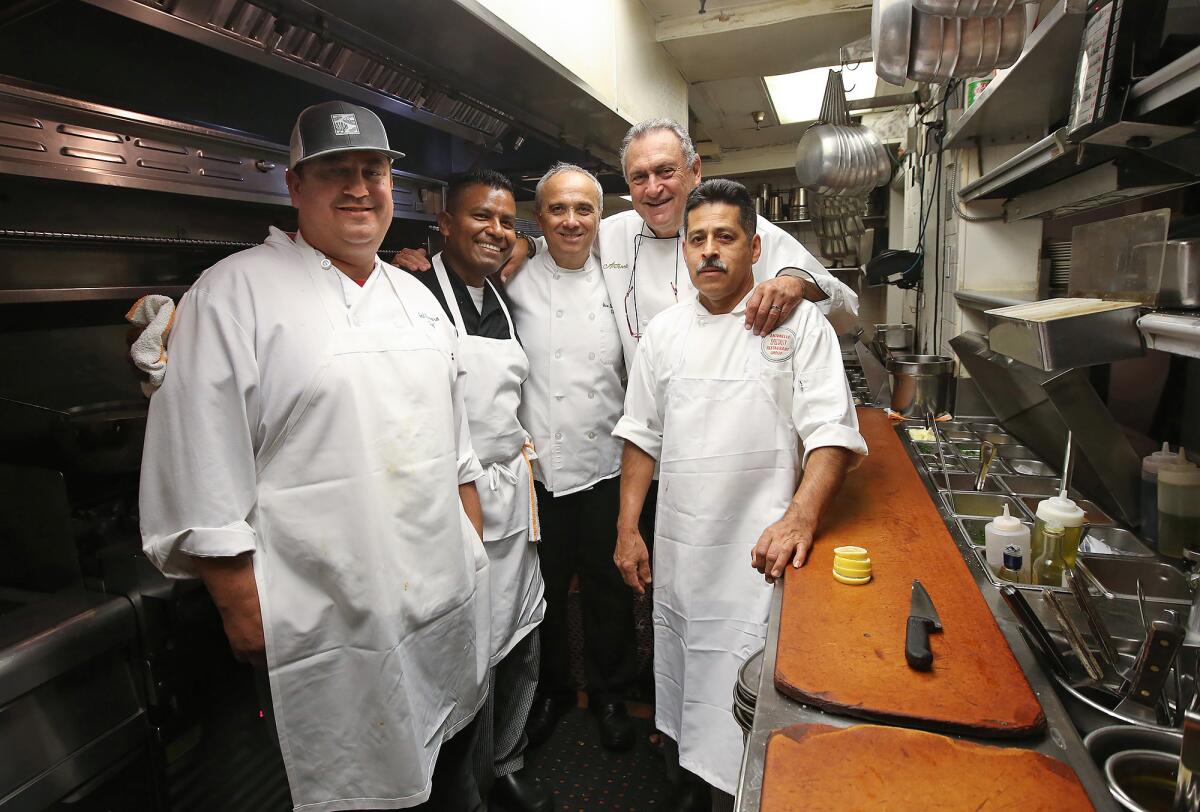
Cagnolo, 68, first immigrated to the United States in 1975. Before that, he worked on a cruise line for three years, traveling the world’s oceans.
“I was paid for having fun,” he said.
Nowadays, four to five times a month, Cagnolo goes out to sea with captain Marco Voyatzis and deckhand Dan McCafferty, two commercial fishermen making their living from the Pacific like few others do in Orange County.
Voyatzis sells his catch directly to the public at the Dory Fishing Fleet and Market in Newport Beach.
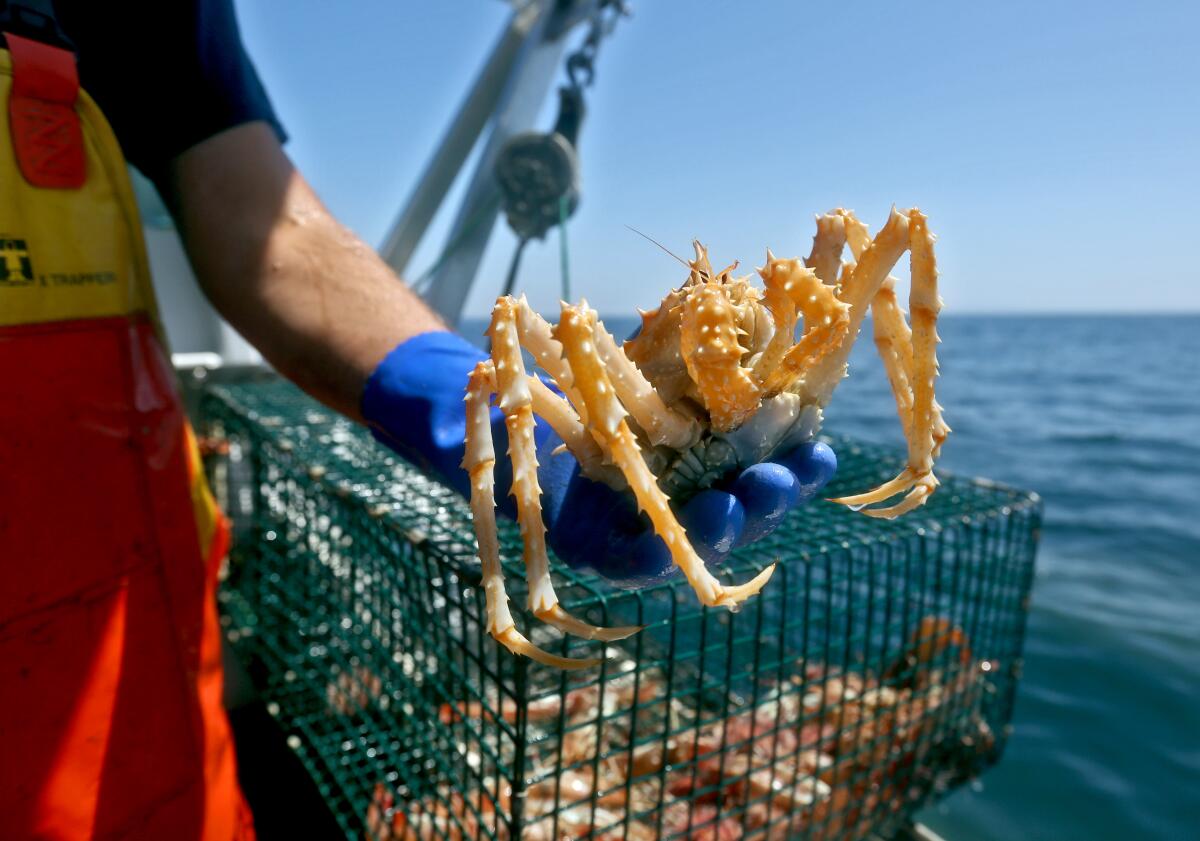
On the August trip, Cagnolo was in full fisherman mode. His waders stretched over an orange Ralph Lauren polo shirt. He wore the distinctive fisherman’s Xtratuf boots and — because he’s Italian — he sported a red Ferrari hat (even though he doesn’t drive one).
His phone case had Pope John Paul II on it. Cagnolo frequently travels back to Italy to see his family and find inspiration for new foods to bring to America.
Voyatzis, 49, who lives in Fountain Valley, sported a ponytail and smoked Marlboro Reds throughout the day, often while at the helm of his boat, Dimi, named after his late brother.
He comes from a Greek fishing family. His weathered hands have endured a life at sea. He started in the industry at age 10 and had his own boat by the time he was 15.
Dimi had its “Jaws” moment a few miles out when Voyatzis spotted a great white shark. Fortunately, the crew had a big enough boat.
He says he has lost the tips of fingers from them getting caught in a line.
“I don’t think he feels pain,” McCafferty, who has been fishing with Voyatzis since the ‘80s, said with a laugh. “I saw [that] happen once. I wanted to go back in, but Marco wanted to stay out and keep fishing.”
McCafferty is a burly 57 years old, his muscles continuously worked from days handling heavy metal fishing traps. He lives in Costa Mesa and, like Voyatzis, has fished with the historic Dory Fleet out of Newport Beach.
Voyatzis had jokes too: “I tried to become a brain surgeon, but there was no brain left.”
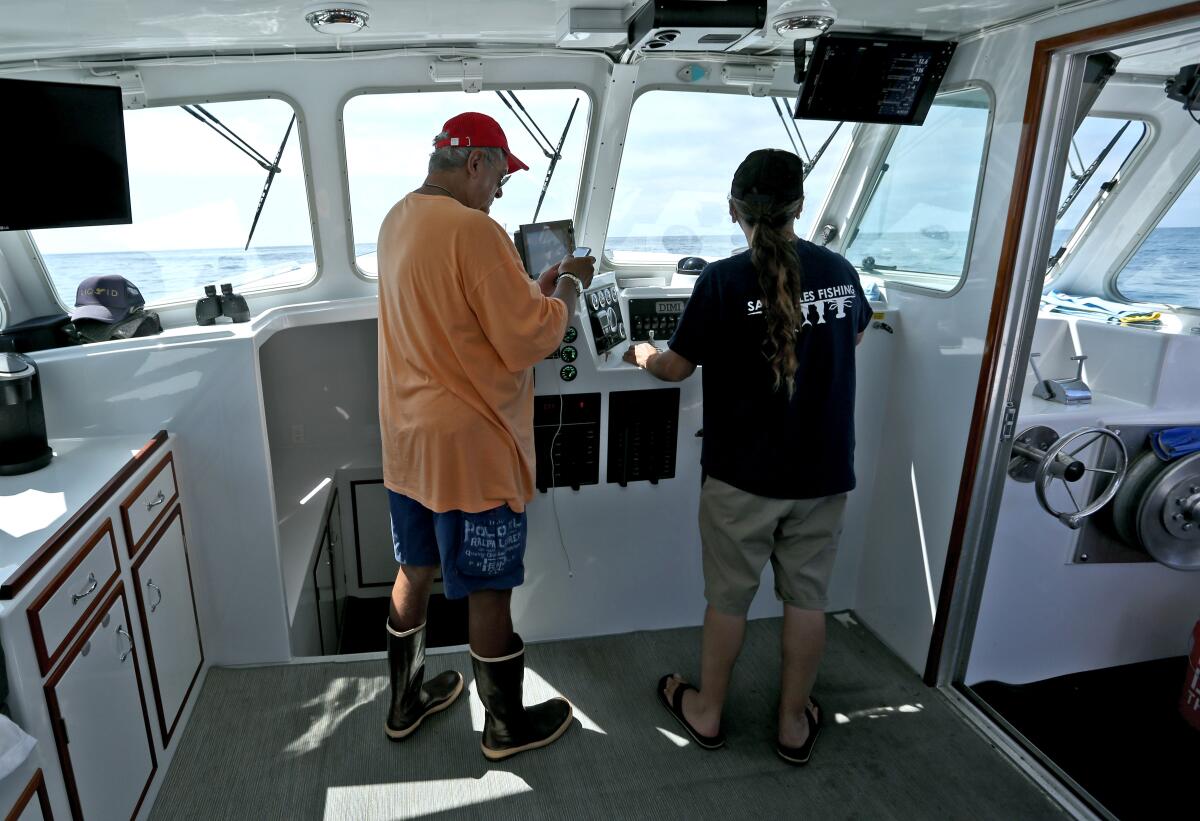
The crew looked for spot prawn shrimp in the water between the mainland and Catalina Island.
For Dimi’s crew members, it was all pretty routine. First, they returned to the spots where several days before they had set their traps on the ocean floor. Then they retrieved the traps to see what had crawled in, snatching what they could for market. Next came placing new bait inside the traps before chucking them overboard again, only to repeat the process days later.
Voyatzis manned the helm and the lines that brought the traps up to the surface. McCafferty hauled the traps with ease, quickly extracting the prawns and determining which to keep and which to throw back. Later, he’d place the prawns in one of the ship’s holds — essentially a water tank that the catch stays in before it is transported to market.
Cagnolo oversaw the process, occasionally helping McCafferty pick through the catch.
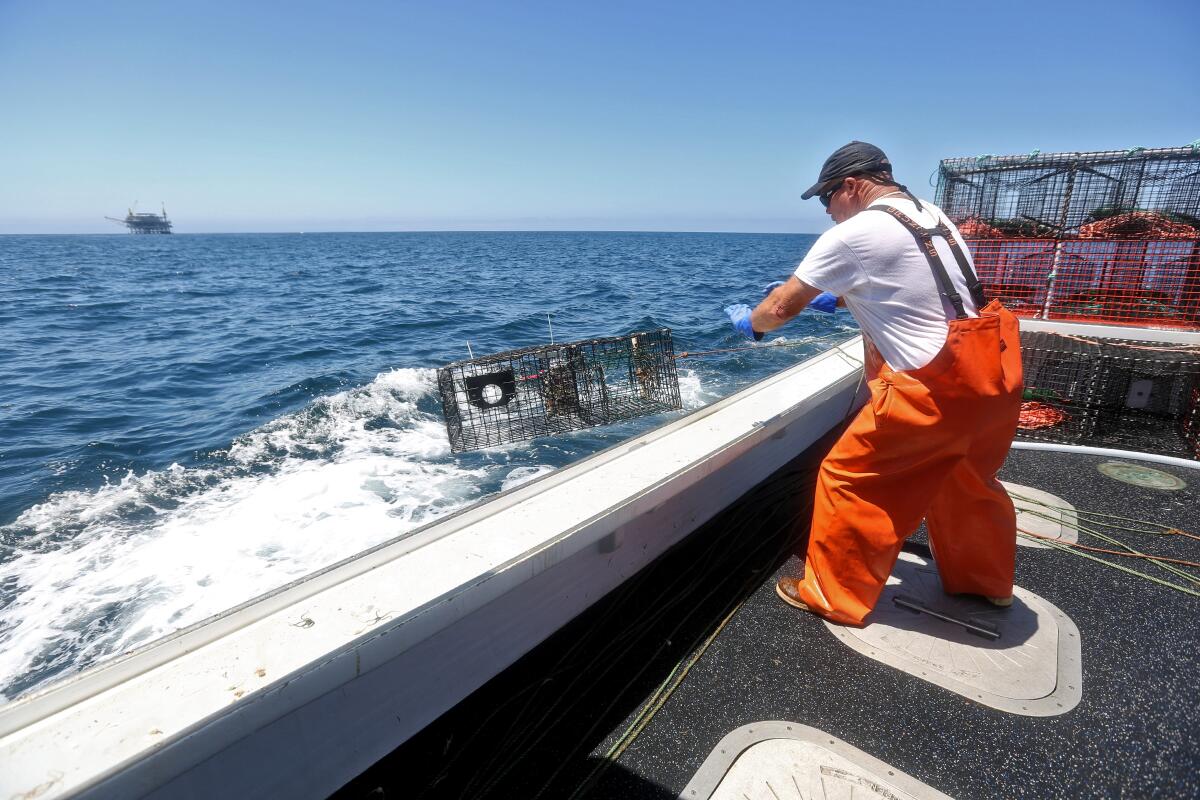
Voyatzis keeps the specifics of the technique close to his chest. He doesn’t want others knowing where they put their traps and how deep the traps are — a fisherman’s trade secrets.
Cagnolo said Italian truffle hunters are the same way.
“Everybody had a secret,” he said.
Not all the traps came up full. Most had bycatch, such as sea urchins or small octopuses, that got thrown out.
“It’s called fishing,” McCafferty said. “Sometimes you get them, sometimes you don’t.”
Cagnolo wasn’t crazy about the octopus.
“It won’t bite you,” Voyatzis said.
“No, it just grosses me out,” Cagnolo replied.
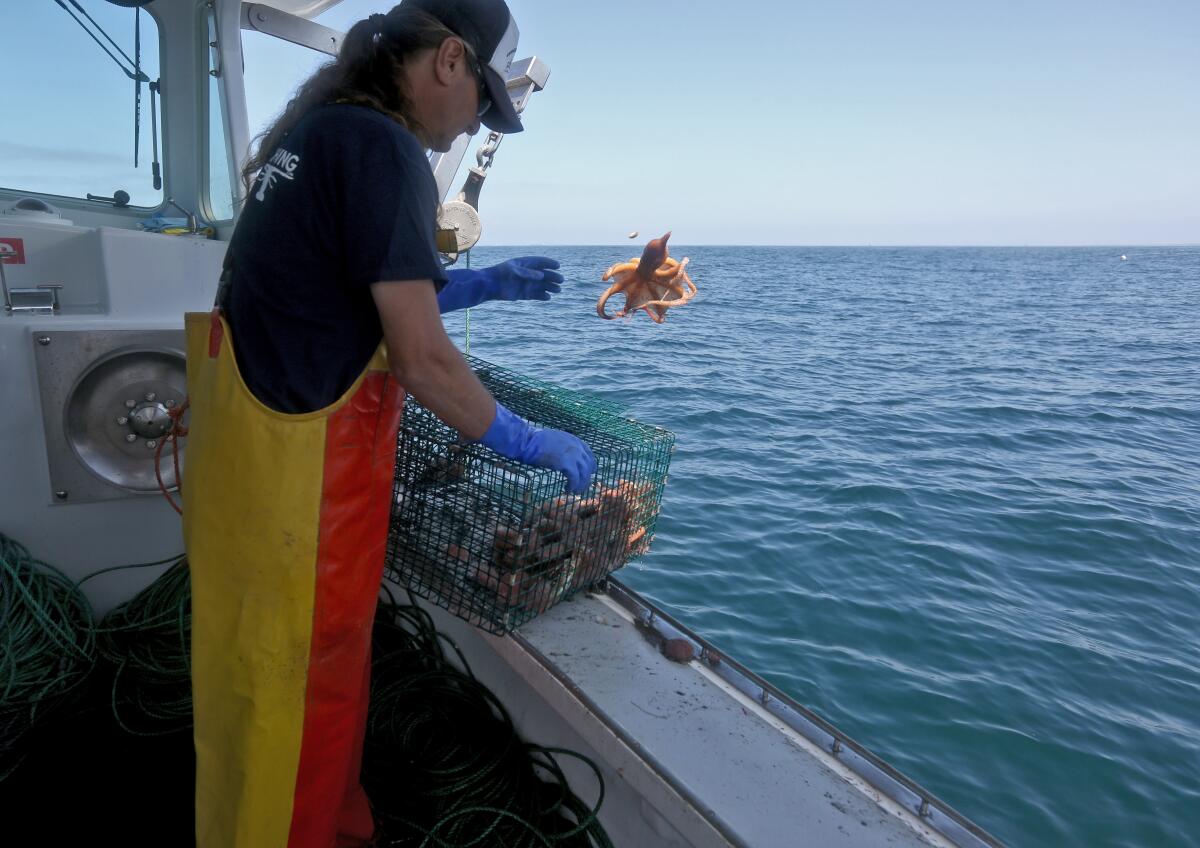
Dimi had its “Jaws” moment a few miles out when Voyatzis spotted a great white shark. Fortunately, the crew had a big enough boat.
“It was a baby!” Voyatzis said. “Only like a hundred pounds.”
The crew used cans of cat food with poked holes as bait. The creatures of the sea apparently love the stench of feline delicacies in the water.
Voyatzis laughed when describing runs to buy huge quantities of cat food.
“People think we have a gazillion cats,” he said.
After a few hours and several traps picked and replaced, Dimi headed in. To celebrate the catch, the men ate some prawns both raw and microwaved, accompanied by olive oil, Tapatío and homemade seasoning.
“Too bad we don’t have any lemon,” Cagnolo lamented.
“I can’t believe no one brought lemon,” Voyatzis said.
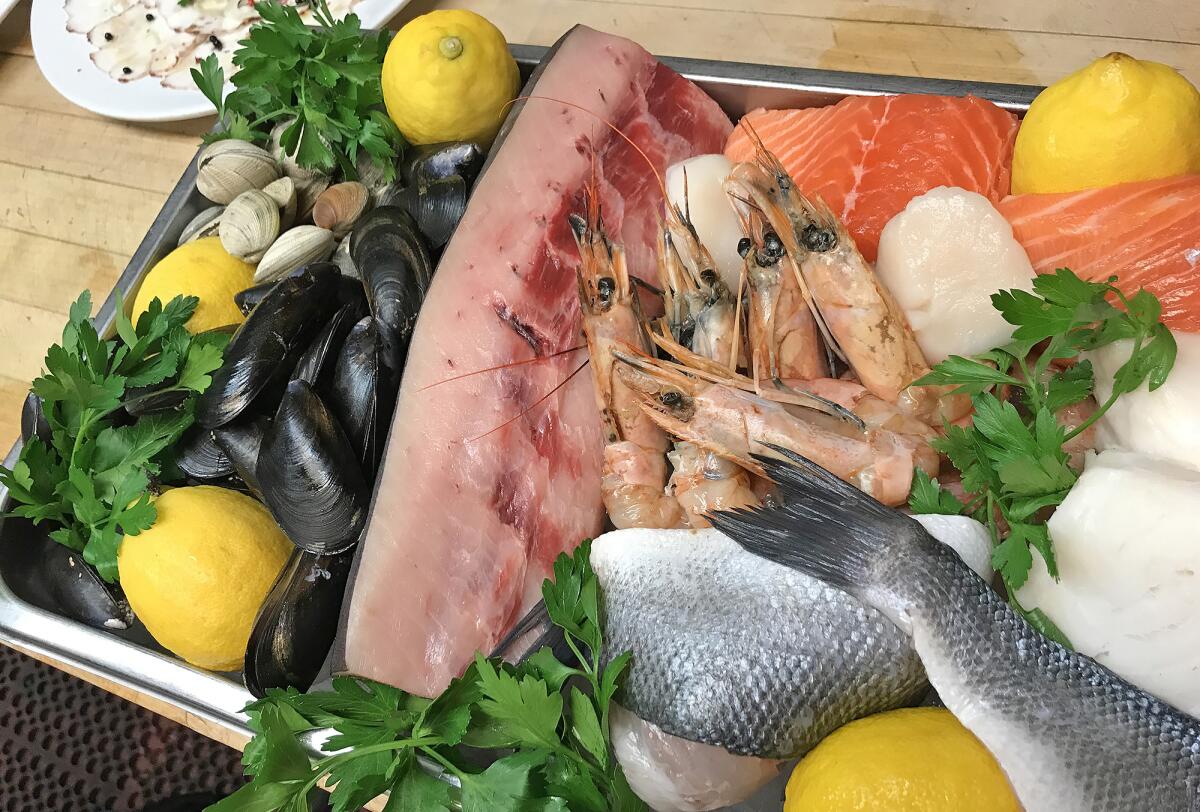
Cagnolo did bring Hello Kitty chardonnay and sake, served in plastic foam cups. He’s a distributor and partner for Hello Kitty’s wine and olive oil. The wine had been kept cold in a bucket filled with water.
The men threw the inedible portions of the prawns into the harbor. Small creatures beneath quickly devoured the carcasses.
“Recycling,” Voyatzis said.
“It doesn’t get better than this,” Cagnolo said, looking out onto the Pacific. “Fresh air. I used to do this with my dad in the Mediterranean. This is where I come from.”
Bradley Zint is a contributor to TimesOC.
All the latest on Orange County from Orange County.
Get our free TimesOC newsletter.
You may occasionally receive promotional content from the Daily Pilot.




